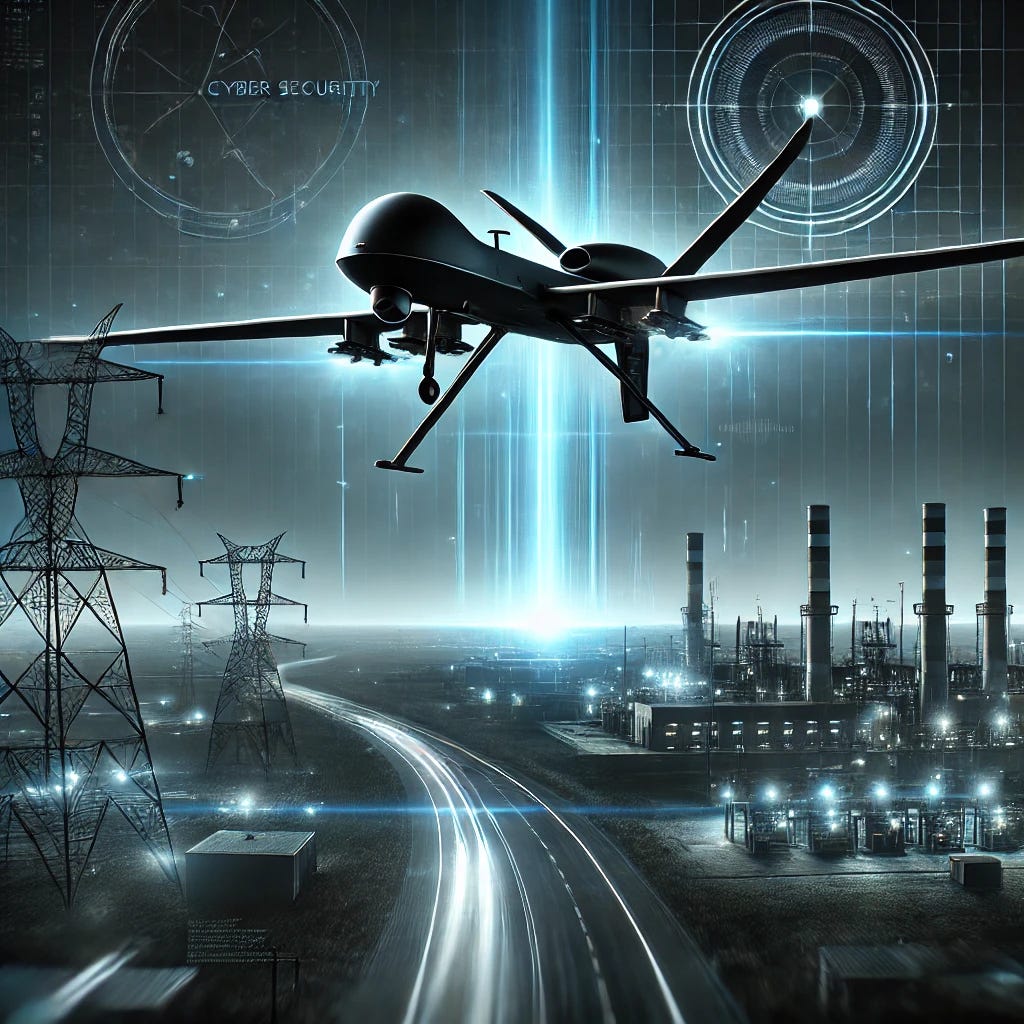QUICKLOOK: New Jersey Drone Incursions Highlight U.S. Airspace Vulnerabilities
New Jersey's Mystery Drones Challenge U.S. Airspace Security Mysterious, large, and unidentified drones spark security concerns over sensitive sites.
BLUF (Bottom Line Up Front)
Unidentified drone swarms have been reported across New Jersey, echoing similar incidents over Virginia’s military installations in 2023. These drones, which exhibit advanced capabilities and target sensitive areas, pose significant national security and surveillance risks. Despite federal investigations, their origin and intent remain unknown, exposing critical gaps in U.S. drone response infrastructure and policies.
Abstract
In recent weeks, mysterious drones have been spotted across eight counties in New Jersey, including areas near military bases, power lines, and suburban neighborhoods. The activity mirrors a similar series of drone incursions over Virginia’s military sites last year, where sensitive equipment had to be relocated to avoid potential threats. These drones operate for hours at night, lack detectable radio emissions, and display advanced flight patterns, raising concerns about espionage or reconnaissance. Federal and state authorities are investigating, but existing legal and operational limitations have hindered effective countermeasures. The incidents reveal vulnerabilities in detecting and neutralizing unauthorized drones in U.S. airspace.
Incident Overview
Targeted Locations:
Military: Naval Weapons Station Earle, Picatinny Arsenal, and Joint Base McGuire-Dix in New Jersey; Joint Base Langley-Eustis in Virginia.
Civilian Infrastructure: Reservoirs, electric transmission lines, rail stations, and police departments.
Residential Areas: Drones frequently seen over suburban neighborhoods, causing public alarm.
Characteristics:
Large, loud, and capable of long-duration nighttime flights (6–7 hours).
Operate without emitting detectable radio frequencies, complicating detection.
Some drones have lights that follow FAA-prescribed patterns, while others lack identification markers.
Patterns and Implications:
Regular flights originating from and returning to the ocean in New Jersey.
Coordinated swarms with advanced flight patterns suggest intent beyond hobbyist use.
Unusual maneuvers, such as hovering, imply reconnaissance capabilities.
Strategic Implications
Espionage and Surveillance Risks:
The drones’ proximity to military bases and critical infrastructure increases the risk of intelligence gathering.
Surveillance of reservoirs and power lines suggests potential interest in disrupting civilian utilities.
Infrastructure Vulnerabilities:
The incidents expose deficiencies in radar and tracking systems for low-emission or stealth drones.
Civilian and military facilities lack integrated counter-drone measures.
Response Challenges:
Existing laws restrict drone neutralization, leaving agencies like the FBI and local police unable to act decisively.
Limited coordination between federal and local authorities complicates timely responses.
Advanced Tactics and Techniques
The drones use stealth and emit no radio signals, likely leveraging sophisticated navigation systems.
Flight patterns suggest pre-programmed routes or advanced operator capabilities.
Their long flight times indicate durable battery or fuel systems, distinguishing them from most commercial drones.
Comparative Analysis
Virginia (2023): Drone swarms over Joint Base Langley-Eustis prompted the relocation of sensitive aircraft. Despite intensive investigations, their operators were never identified.
Nevada (2023): Drones flew over a nuclear weapons research facility, bypassing detection systems, highlighting vulnerabilities in critical infrastructure security.
Chinese Spy Balloon (2023): Highlighted delays and limitations in U.S. airspace defense, raising similar concerns about proactive measures against surveillance.
U.S. Response and Security Implications
Technological Deficiencies:
Current radar systems are unable to detect small, low-emission drones.
Counter-drone technologies like jamming or directed energy weapons remain underdeveloped and rarely deployed.
Legislative Gaps:
Federal law prohibits non-federal entities from taking down drones, even over restricted airspace.
Proposed legislation to expand counter-drone authority has faced bureaucratic and legal hurdles.
Coordination Challenges:
No single agency is designated as the lead responder, leading to fragmented efforts.
Local authorities lack the resources and expertise to address complex drone incursions.
Public Transparency Deficits:
Limited communication from federal agencies has fueled speculation and public distrust.
Residents and local officials feel excluded from critical safety discussions.
Implications and Analysis
Why Does This Matter?
Unauthorized drones near military installations and critical infrastructure threaten national security and public safety.
The incidents reveal how adversaries might exploit airspace vulnerabilities to conduct espionage or test U.S. response protocols.
Impact on Industries and Geopolitics:
Power and water utilities face increased risks from reconnaissance or sabotage.
U.S. credibility in airspace security may be undermined, emboldening adversaries.
Risks:
Immediate: Potential exposure of sensitive military and civilian operations.
Long-term: Escalating drone incursions that outpace detection and response capabilities.
Why Should We Care?
Drone incursions over U.S. airspace represent a clear threat to sovereignty, national security, and civilian infrastructure. As drones become more advanced and accessible, the risk of espionage, disruption, or attack grows exponentially. Failure to address these threats now could lead to severe consequences in the future.
How Can We Fix It?
Technological Solutions:
Invest in advanced radar systems capable of detecting stealth drones.
Deploy counter-drone tools such as jamming devices, directed energy weapons, and interception nets.
Regulatory Reforms:
Expand legal authority for state and local agencies to neutralize unauthorized drones.
Pass legislation to streamline inter-agency coordination and provide clear jurisdictional mandates.
Operational Strategies:
Create specialized rapid-response units within the Department of Homeland Security.
Train local law enforcement in drone detection and incident management.
Public Engagement:
Increase transparency through regular updates and briefings on drone-related incidents.
Educate the public about safe drone operation and reporting unauthorized activity.
Conclusion
The repeated incursions of drones over New Jersey and Virginia highlight critical vulnerabilities in U.S. airspace security. Addressing these challenges requires immediate investments in technology, legislative reforms, and improved coordination among agencies. Proactive measures will ensure that the U.S. remains prepared to counter future drone threats effectively.
References:
The Wall Street Journal: "The Mystery Drones Are Back—This Time Over New Jersey," December 11, 2024.
The Wall Street Journal: "There Are Mystery Drones Flying Over My House. I Tried to Track Them Down," December 13, 2024.
The Wall Street Journal: "Mystery Drones Swarmed a U.S. Military Base for 17 Days. The Pentagon Is Stumped," December 14, 2024.




